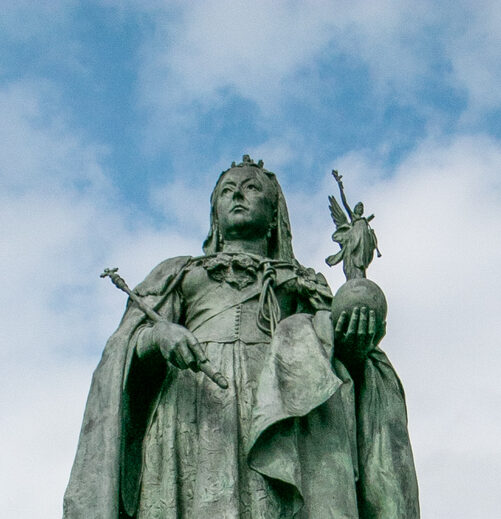
The Art, Craftsmanship, and Legacy of the Victorian Era
The Victorian Era is one of Britain’s defining periods, helping to shape the way we perceive beauty, craftsmanship, and legacy. Covering the reign of Queen Victoria (from 1837 to 1901), this transformative era witnessed a remarkable blend of tradition and innovation that continues to captivate collectors and enthusiasts alike.
For those who own Victorian pieces, these antiques aren’t simply relics of the past; they are enduring symbols of artistry, sentiment, and social change. They reflect not only the aesthetics of their time but also the values and emotions of the people who cherished them. We understand this, and our expertise in evaluating and purchasing Victorian-era items ensures that your treasures are in the hands of professionals who appreciate their significance.
If you have Victorian jewellery, silverware, or other collectables for sale, working with Burlingtons Ltd. ensures your items will be passed on to someone with a keen eye for the era. Read on and find out more about this golden age and its luxury items, or contact us to book a free, no-obligation valuation for the items you’d like to sell.
Change and Prosperity in the Reign of Queen Victoria
The reign of Queen Victoria marked one of the most transformative periods in British history. Her era witnessed significant advancements in technology, industry, and culture, shaping the nation’s identity and leaving a lasting impact on art, design, and craftsmanship. It was a time of immense prosperity and progress, laying the groundwork for many of the traditions and styles we associate with Victorian antiques today.
The Industrial Revolution and Its Influence on Design
The Victorian period overlapped with the Industrial Revolution, a period of rapid technological advancement that revolutionised the way goods were produced. Factories and mechanisation allowed for the mass production of items that were once handcrafted, making luxury goods more accessible to the growing middle class. However, despite the rise of mass production, there was still a strong emphasis on craftsmanship, particularly in jewellery, furniture, and decorative arts.
Victorian jewellery, for instance, saw the introduction of new techniques such as electroplating and stone cutting, which allowed for more intricate designs. Popular styles included romantic motifs like hearts, flowers, and bows, reflecting the sentimental values of the era.
The Expansion of the British Empire
As the British Empire expanded across the globe, it brought back influences from far-reaching colonies. This expansion had a profound impact on Victorian design, introducing exotic motifs and materials that became highly fashionable. Jewellery featuring Indian gemstones, Egyptian-inspired motifs, and oriental designs became popular, reflecting the fascination with foreign cultures.
These influences extended beyond jewellery into decorative arts and architecture. Home interiors often featured exotic elements, from richly patterned textiles to ornate furnishings inspired by Eastern designs. This blending of British tradition with global influences created a distinctive style that remains highly sought after by collectors today.
Social and Cultural Shifts in Victorian Tastes
The Victorian Era was also a time of significant social and cultural change. The growing middle class, fuelled by industrial prosperity, sought to express their newfound wealth through the acquisition of luxury goods. This shift in societal structure influenced tastes in art, fashion, and home décor.
Victorian tastes evolved throughout the era, beginning with a romantic and sentimental style that gave way to more elaborate and ornate designs in the later years. Mourning jewellery, for example, became a popular trend following the death of Prince Albert in 1861. Black enamel, jet, and hairwork pieces became symbols of remembrance and grief, reflecting the era’s fascination with death and legacy.
Key Characteristics of Victorian Antiques
Victorian Jewellery
Victorian jewellery is renowned for its sentimental value and exquisite craftsmanship. Pieces from this period often feature romantic and symbolic motifs, making them deeply personal to the wearer.
Popular Materials:
- Gold (often in yellow, rose, or green hues; the latter is also called electrum)
- Garnets, pearls, and diamonds
- Jet, especially for mourning jewellery
Styles:
- Romantic Motifs: Hearts, flowers, and bows were popular symbols of love and affection.
- Mourning Jewellery: Following Prince Albert’s death in 1861, mourning jewellery became a significant trend. These pieces often featured black enamel, jet, and even hairwork as a way to remember loved ones.
- Sentimental Lockets: Lockets containing photographs, hair, or miniature portraits were cherished keepsakes during the Victorian Era.
Victorian Silver and Decorative Items
Victorian silverware and decorative items are distinguished by their intricate designs and hallmarking system, which helps identify their authenticity and origin.
Hallmarks:
Victorian silver pieces are typically hallmarked with a series of stamps indicating the maker, assay office, and year of production. Understanding these marks can help verify the authenticity and age of the item.
Popular Items:
- Silver tea sets
- Trays
- Candlesticks
Craftsmanship:
Victorian silverware often features ornate designs, including repoussé work (a technique of hammering patterns into metal) and Gothic Revival influences. These detailed embellishments add a distinctive character to each piece.
Victorian Art
Art from the Victorian Era reflects both the romanticism and realism that defined the period. Painters and sculptors drew inspiration from historical events, literature, and nature, creating works that were both decorative and meaningful.
Styles:
Romanticism: Early Victorian art often embraced romantic themes, focusing on beauty, emotion, and nature. Portraits and landscapes were common, celebrating both human achievements and natural wonders.
Realism: As the era progressed, artists began to focus on more realistic depictions of everyday life, capturing the struggles and triumphs of ordinary people. This shift reflected the growing awareness of social issues during the Victorian period.
Influences:
The Pre-Raphaelite Brotherhood, an influential group of artists, sought to return to the detail and vibrancy of medieval art. Their works often featured rich colours, intricate details, and themes drawn from mythology and literature.
Get fantastic upfront prices for your Victorian treasures
Speak to a member of our team to get started


Why Victorian Pieces are Still Valuable Today
Craftsmanship and Materials
Victorian-era items were often handcrafted with exceptional skill and precision. From intricate jewellery designs to beautifully engraved silverware, these pieces were made to last. The use of high-quality materials such as gold, sterling silver, garnets, and diamonds further enhances their value. Unlike mass-produced modern items, Victorian antiques were unique creations that reflected the artistry of their makers.
Jewellers, silversmiths, and artists of the Victorian period took immense pride in their work, resulting in items that remain both beautiful and functional today. This level of craftsmanship is rare in contemporary goods, making Victorian pieces stand out in the modern market.
Sentimental and Historical Value
Many Victorian antiques carry deep sentimental value, as they were often made to commemorate significant life events such as weddings, births, and mourning periods. Lockets containing photographs or hair, mourning jewellery crafted from jet, and personalised silver items are just a few examples of the deeply personal nature of these items.
Enlist Our Expertise to Sell Victorian Antiques
With decades of experience in evaluating and purchasing Victorian antiques, our team offers a personalised service that ensures your items are handled with care, respect, and expertise. Whether it’s a sentimental locket, a beautifully engraved silver tea set, or a dramatic oil painting, we recognise the value – both financial and historical – of every piece.
We also offer discreet home valuations, immediate payment, and a seamless, hassle-free process that sets us apart from traditional auction houses. If you’re considering selling your Victorian antiques, let Burlingtons Ltd. help you uncover their true value. Contact us today to arrange a valuation.
Get a competitive price for your Victorian items fast
Quick valuations and upfront cash offers